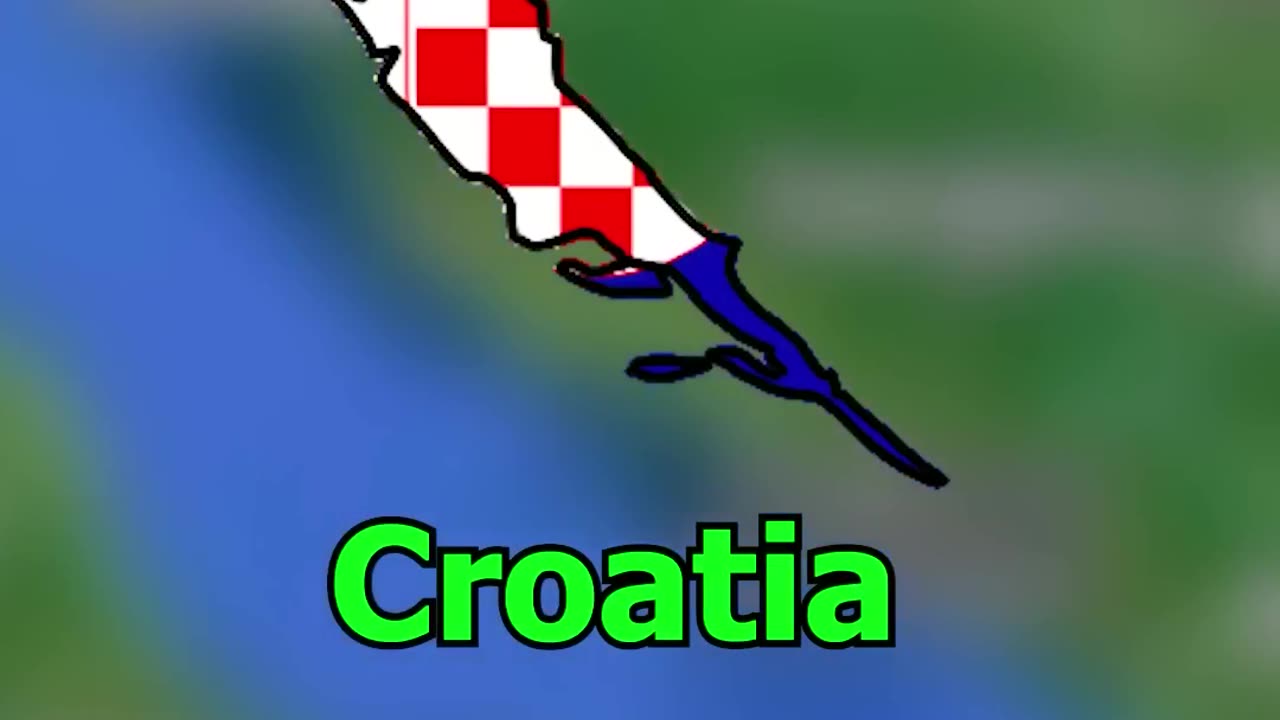Premium Only Content

Did you know in Croatia...🇭🇷🇭🇷
Croatia is a beautiful country located in Central Europe, known for its stunning coastline along the Adriatic Sea, ancient cities, and rich history. In this blog, we'll explore some interesting facts about Croatia that you might not have known before.
The necktie was invented in Croatia
Yes, you read that right! The necktie, one of the most popular accessories for men's formal wear, was actually invented in Croatia. The word "cravat" is derived from "Hrvat", which means "Croat" in Croatian. The cravat was first worn by Croatian soldiers during the Thirty Years' War in the 17th century and was later adopted by the French aristocracy.
Croatia has over 1,000 islands
Croatia has a stunning coastline that stretches over 5,800 kilometers, and it's dotted with over 1,000 islands, making it a popular destination for sailing and island hopping. Some of the most popular islands to visit include Hvar, Brač, Korčula, and Vis.
The Dalmatian dog breed comes from Croatia
The Dalmatian dog breed, famous for its white coat with black spots, actually originates from Croatia. The breed was used as a carriage dog in the 19th century and was often seen running alongside horse-drawn carriages.
Croatia has the world's smallest town
The town of Hum, located in Istria, is often referred to as the world's smallest town. With a population of only 21 people, Hum has a rich history and is known for its medieval architecture, including a 12th-century church and town walls.
The Plitvice Lakes National Park is a UNESCO World Heritage site
The Plitvice Lakes National Park, located in central Croatia, is a stunning natural wonder that attracts visitors from all over the world. The park is home to 16 interconnected lakes, numerous waterfalls, and a variety of flora and fauna. In 1979, it was declared a UNESCO World Heritage site, making it a must-visit destination for nature lovers.
The neck of land that connects Croatia to the rest of Europe is only 50km wide
Croatia is located at the crossroads of Central and Southeast Europe, and its borders touch Slovenia, Hungary, Serbia, Bosnia and Herzegovina, and Montenegro. The neck of land that connects Croatia to the rest of Europe is only 50 kilometers wide at its narrowest point, making it a strategically important location throughout history.
-
 2:38:46
2:38:46
vivafrei
11 hours agoEp. 269: U.S. Strikes Iran! Karen Read Verdict! Grace Schara Verdict! National Gaurd, SCOTUS & MORE!
192K287 -
![Batman Arkham Knight [4K + Mods] Hardest Difficulty ⋆ Western Re-tread](https://1a-1791.com/video/fww1/ca/s8/1/7/9/T/V/79TVy.0kob-small-Batman-Arkham-Knight-4K-Mod.jpg) 3:50:55
3:50:55
FusedAegisTV
5 hours agoBatman Arkham Knight [4K + Mods] Hardest Difficulty ⋆ Western Re-tread
40.3K3 -
 2:25:09
2:25:09
Tundra Tactical
5 hours ago $3.15 earned🚨🔫Tundra Nation Live Rips Apart Media Lies on Short Barreled Rifles & Suppressors 🎇🧨
81.2K1 -
 2:47:06
2:47:06
Barry Cunningham
7 hours agoPRESIDENT TRUMP PROTECTED AMERICA AND NOW THE WORLD AND THAT DEMOCRATS KNOW!
51.9K47 -
 LIVE
LIVE
Joker Effect
1 hour agoSoundboard Lord / Midnight In The Mountains talk about Gaming on the Rumble platform. Is it good?
556 watching -
 LIVE
LIVE
Cewpins
1 hour agoLet's Get HIGH!🔥Rumble Creator Sesh at Midnight! 💨420🍃Switch 2 !giveaway
130 watching -
 LIVE
LIVE
Mossy
9 hours ago🔥MODDED MAYHEM🔥ALL THE MODS 9 RUMBLECRAFT GRIND🔥420 SESH🔥#RUMBLETAKEOVER🔥
58 watching -
 21:53
21:53
Stephen Gardner
6 hours ago🔥What EVERYONE missed about Trump bombing Iran!
68.9K377 -
 LIVE
LIVE
CharleyHornsePlays Rage Gaming
1 hour agoCharleyHornsePlays | REMATCH with the boys | Get fully soccered on
16 watching -
 3:18:19
3:18:19
Shoriantrax
4 hours agoGOON WIPED. BAGS MAXED. | Tarkov Raid With ShoriAntrax
26.7K